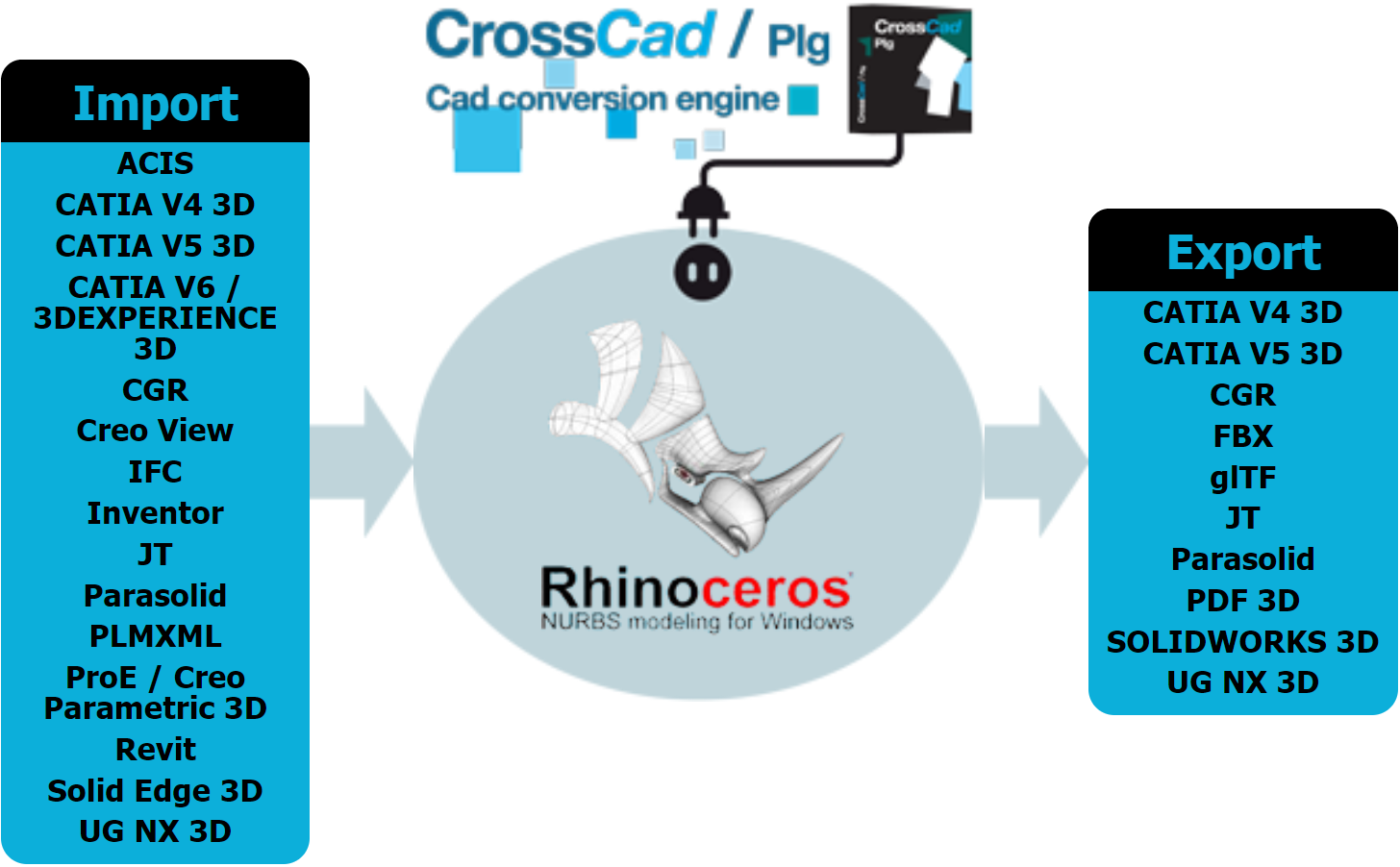- Join our Team
- Resources
-
Account
- |
- Cart
- EN FR
A prolific confinement … for Rhino 3D plug-ins

July 30, 20
The period of home confinement has been a period of intense activity for the developers of Datakit, French specialist in data transfer between CAD systems. Around Rhino 3D, no less than 4 plug-ins support new formats, while textures are now supported in the JT and CATIA V5 file import plug-ins, as well as in the export to 3DPDF and FBX.
French publisher Datakit, specialist in data exchange tools between CAD systems, has been completing its range of plug-ins for the Rhinoceros 3D CAD software, developed by Robert McNeel & Associates since 1992. This one, better known by the diminutive of Rhino 3D, is very appreciated in the field of industrial design and architecture, for its ease of modeling complex 3D shapes.
The new plug-ins for Rhino 3D are twofold, both for the export and import of new file format extensions, as well as for surface texture support.
New features of export plug-ins
"We have supplemented our range of tools for writing open files in Rhino 3D with FBX and glTF formats," explains Félix Thuilier, Marketing Manager at Datakit.
FBX format (.fbx) is an Autodesk proprietary file format widely used by the publisher with its Maya, 3ds Max, and MotionBuilder animation software, as well as its CAD software. It facilitates the acquisition and exchange of 3D models, as well as associated documents and media, from multiple sources, including the world of animation and video games.
For its part, the glTF format (Graphics Library Transmission Format) (.gltf, .bin, .glb), is a file format, free of rights, based on the JSON format, facilitating the exchange of scenes and models between 3D applications. Developed since 2012 by the Khronos Group industrial consortium, this file format is compact, inter operable, and fast to load. This facilitates the visualization of 3D models on web pages. It is often presented as the “JPEG of 3D”.
These two plug-ins are available individually at a price of € 1,000 or in the export bundle, which increases from 5 to 7 supported formats, at the unchanged price of € 1,500. All customers of this bundle, up to date with their maintenance, have access to these two new plug-ins at no additional cost.
What's new in import plug-ins
“For playing third party files in Rhino 3D, we have added to the Revit format import plug-in support for .rfa files in addition to .rvt files. Similarly, we added to the IFC format import plug-in, support for .ifcZIP files in addition to .ifc and .ifcXML files. This shows that the world of construction and in particular BIM (Building Information Modeling) is an important development axis for us” explains Félix Thuilier.
Revit is a 3D design software for the construction world published by Autodesk. “The .rvt format corresponds to a global Revit project that can integrate several buildings. The .rfa format is used for standard element families offered by Autodesk, as well as for specific user-defined elements. They can be imported and instantiated in a .rvt project”, explains Laure Bedu, head of development around Revit at Datakit.
For its part, the IFC (Industry Foundation Classes) format is a standardized file format (ISO 16739 standard) used in the construction world to exchange information between different softwares. “These files can have .ifc, .ifcXML or .ifcZIP extensions, which are now all supported by the plug-in,” notes Laurent Eraud, developer at Datakit.
The textures support
The surface textures are important pieces of information to transmit when exchanging files with Rhino 3D because, in addition to the more realistic visual aspect, they inform the user about the nature of the elements they dress (brick wall or stone for example). This is why Datakit has decided to support them in its JT and CATIA V5 file import plug-ins, as well as in its export plug-ins to 3D PDF and FBX.
All of these developments are the result of monitoring market trends by Datakit's strategy team, confirmed by specific requests from customers. They are the subject of writing specific features allowing the use of the desired file extension for import or export. They are then directly integrated into a plug-in that adds a Datakit Exchange tab to the Rhino 3D menu bar.

A JT file with texture imported into Rhino: The texture is displayed as in the original model
For more information: https://www.datakit.com/en/conversion-plug-ins/rhino-25.html